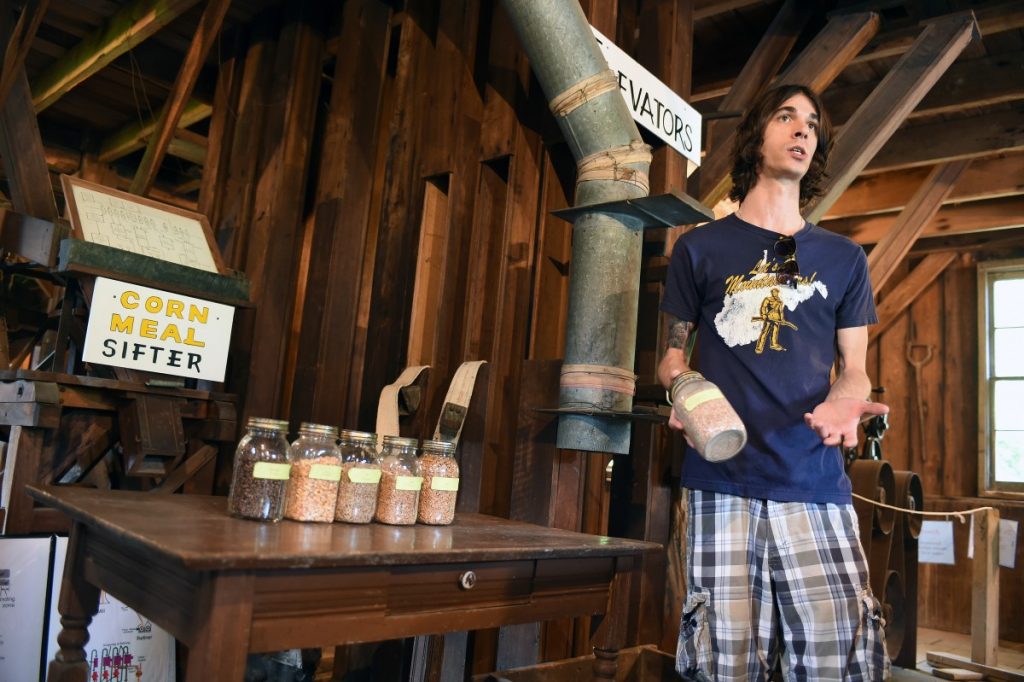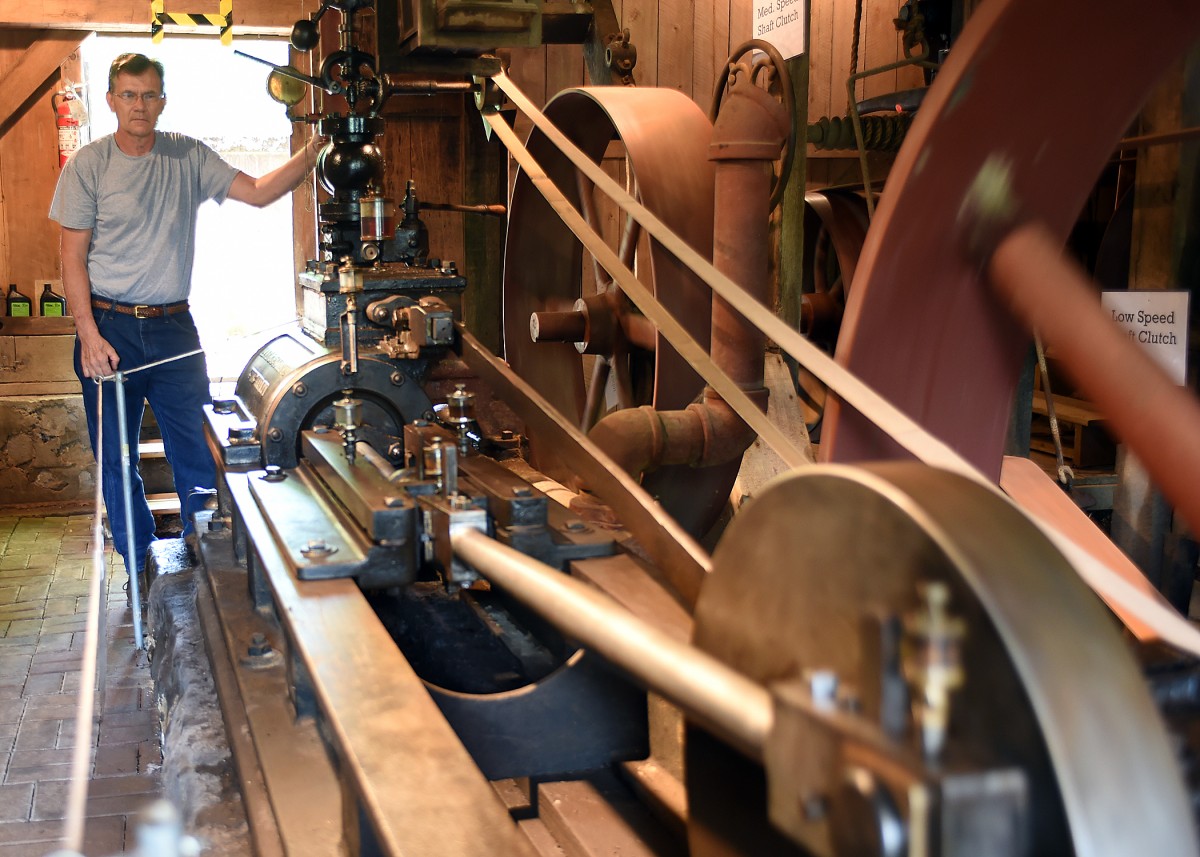MORGANTOWN — Here’s some grist to the mill for your argument, the next time you complain about things not being built the way they used to be built.
You know: When your clothes dryer decides to tumble off to Appliance Heaven after only 5 years, for example.
Or when the lawn mower surrenders one of its wheels, and you still have half a yard to get done.
Or when any other device you own decides to conk out, crap out and otherwise consign itself to the dustbin of manufacturing history — right after the warranty is up, of course.
Heck, might as well go out and buy a new one now. Even if you could fix it, the parts probably cost more than the actual thing is worth, anyway.
Yep, the next time you complain, you can at least get a reminder of the days when things used to last.
Just take a tour of the Easton Roller Mill and get Roger Ruckle to fire up that Lane and Bodney single-cylinder, double action steam engine for you.
Said engine, built at the Lane and Bodney plant, in 1874, is still fully operational.
Ruckle, a gearhead and vintage machine enthusiast from, well, way back, demonstrated it to a group of visitors taking the first tour of the season Sunday afternoon, at the Easton Roller Mill, which is just outside Morgantown, where Hartman Run Road picks up U.S. 119.
When Ruckle engaged the engine, it was all Machine Age marvel: Wheels, pulleys, belts and gears all moved on the collective pulse of enterprise.
“Pulse,” is right. That engine drove the mill’s operation.
“It’ll run forever,” Ruckle said, over the can-do cacophony, that really wasn’t all that loud, all parts considered. “You just have to maintain it.”
Right there with West Virginia
For generations, the mill maintained its place as a key cog in the region’s bustling manufacturing industry. Henry Koontz Jr., a local entrepreneur who settled in the Morgantown area in 1850, signed the work order in 1864, the first year of West Virginia statehood after the Civil War.
Three years later, the mill was thrumming.
Through 1864, it operated as a pure grist mill, grinding up corn, wheat, flax and rye grown by local farmers.
In 1894, the plant was reconfigured to produce a finer grade of white flour, which carried the mill right up to Great Depression. It hung on for a year after the market crash, in 1929.
Ten years later, another attempt was made to resurrect the mill, but war clouds were loom-ing and the market was again different, as America readied to fight in World War II, which spanned two oceans.
“A lot the machinery was scrapped because they needed the metal for the war effort,” Nick Hess said.

Hess, a genial WVU graduate student who hails from Illinois, wants to be a high school history teacher.
He’s been giving tours at the mill for the last couple of years and said he never fails to be enthralled by the living history he finds within its confines.
“Let me show you this,” he said, directing visitors to the close-quarter offices of the in-house miller, the plant manager.
On the brick wall were scratched-in initials and dates.
“There’s one here from 1884,” he said. “And 1907.”
He likes that, he said. He also likes that the mill isn’t a movie set; it looks like it could start up for a new shift anytime.
Besides those initials and dates, there are workmen’s uniforms hanging on hooks and a well-used Toledo-brand scale off in one corner.
Hess also gleefully pointed out a patch or two of flour on the floor, which is probably around 80 years old.
“You wouldn’t want to eat anything made with that,” he said.
However, he said, if you’re one who appreciates machinery and architecture from days gone by, a visit to the mill is a nourishing experience.
The original, hand-hewn timber used in the construction is still there. The mill simply sat at the bottom of Easton Hill until 1980, when it was acquired by the Monongalia Historical Society.
Today, the mill’s guest log boasts the signatures of visitors from India and Austin, Texas, among other locales.
For its 2018 season, tours will be on Sundays through September, the historical society said. Tours will be from 2-5 p.m. Upcoming dates are June 24, July 22, Aug. 26 and Sept. 23. For more information, call 304-594-2290.
The mill made the National Register of Historic Places in 1976.
‘Holy mackerel,’ for high-tech (and horse hair)
With its owners’ em-phasis on using the latest technological advances, the Easton operation, Hess said, would be the equivalent of a whiz-bang, Silicon Valley-type enterprise today.
That wasn’t lost on Mike Vernon, a history and machinery enthusiast taking in the tour Sunday with his wife, Beverly Martin. They were first-time visitors.
Vernon was impressed by that steam engine, with its pulleys and brass fittings. He liked all the checkpoints put in place after the mill switched over to a pure flour-making enterprise.
The flour “dresser,” which is a mechanical device that separates finished flour from leftover grains caught his attention immediately. It was the bristles on the brushes used to sift the flour.
“That’s horse hair,” he said. “Holy mackerel.”




